
The Institute for Gravitronomic Inertiametrics’ Department of Geolimbic Research today released provisional findings suggesting that the Earth’s axial tilt, long attributed to gravitational mechanics and primordial impact events, may, in fact, be a function of our home planet’s personal preference. These observations of the Earth’s inclination, both literal and figurative, have the potential to upend previously-held beliefs about the planet’s obliquity relative to its orbital plane.
Dr. Prof. Coleman P. Wittlewasher, Distinguished Theorist in Applied Geopsyochmetrics and author of How Do You Feel About Space?, the only work of its kind in the field, characterized the discovery thusly:
It’s a paradigm-shifter. It rattles the soul. The Earth cries for help. We no longer view the ~23.44° tilt as a passive remnant of some ancient collision. It is not a scar, but a gesture of yearning. The planet is not a machine. She leans, ever so slightly, towards something she cannot name. It is up to us to put words to the longing.
Affective Modulation of Earth’s Obliquity Over Time
Previously, the Earth’s obliquity relative to the ecliptic plane was thought to result from the chaos of the Solar System’s formation: the Earth having been struck by a Mars-sized object 4.54 ± 0.05 billion years ago.
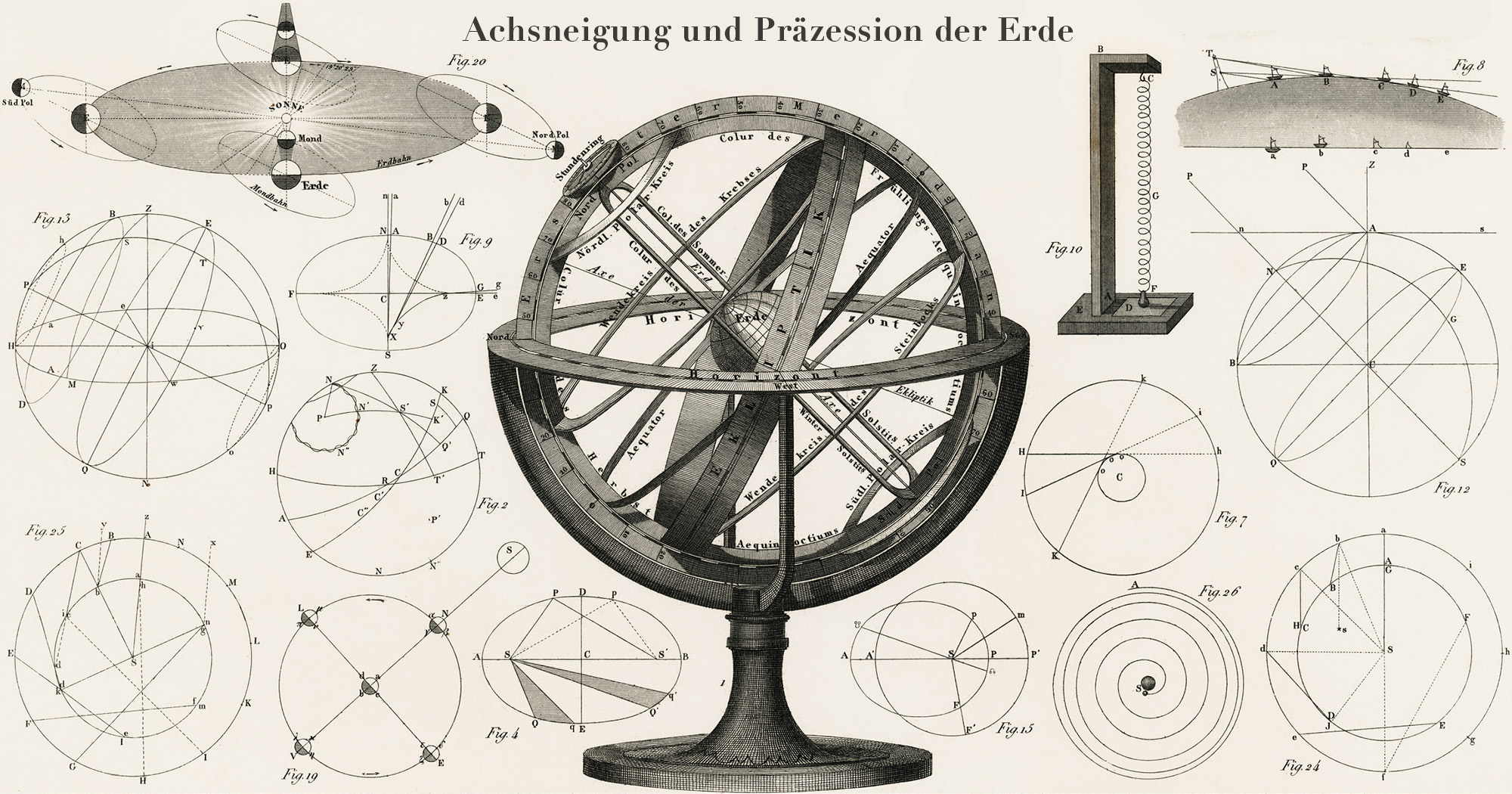
However, new models integrated into the Institute’s continually expanding corpus of Knowledge of the Fundamental State of the Universe, or KOFSTU, note the mounting body of circumstantial sentimental phenomena associated with the Earth’s seasons. Caused of course by the planet’s axial tilt relative to the orbit around the Sun, the seasons themselves reveal a connection between Psychosocial Phenomena and Pangeologic Procession (PPPP).
This has led our researchers to define a new class of planetary motion, provisionally termed OWCH, or Orbital Whims and Changes. In essence, it holds that celestial motion is not strictly deterministic in accordance with established gravitational dogma, but subject to measurable deviation if feeling a certain kind of way. Dr. Prof. Wittlewasher elaborated in his podcast Cosmically Speaking:
There are moments, rare but real, when the Earth simply cannot be bothered to carry on its steadfast inertia. These are not errors in our calculations, but a window into the depths of planetary sentiment: axial weariness, orbital lassitude, magnetospheric ho-hum-ness, tectonic torpidity. Absolutely enormous moods, the source of which we can guess at, but the methods of changing them remain theoretical and experimental. Imagine my teenage daughter saying, “I can’t even.” It’s indifference on a planetary scale.
Dr. Prof. Wittlewasher expanded on these concepts in his whitepaper On the Effect of Cosmic Affect: Attitude and Inclination in the Universe:
The tilts are subtle but significant, indicating true feeling, conviction, regret, passion, hope. Even motivation. What does the Earth feel like doing? We even measured an increase in flirtatious banter when Mars passed through our celestial neighborhood.
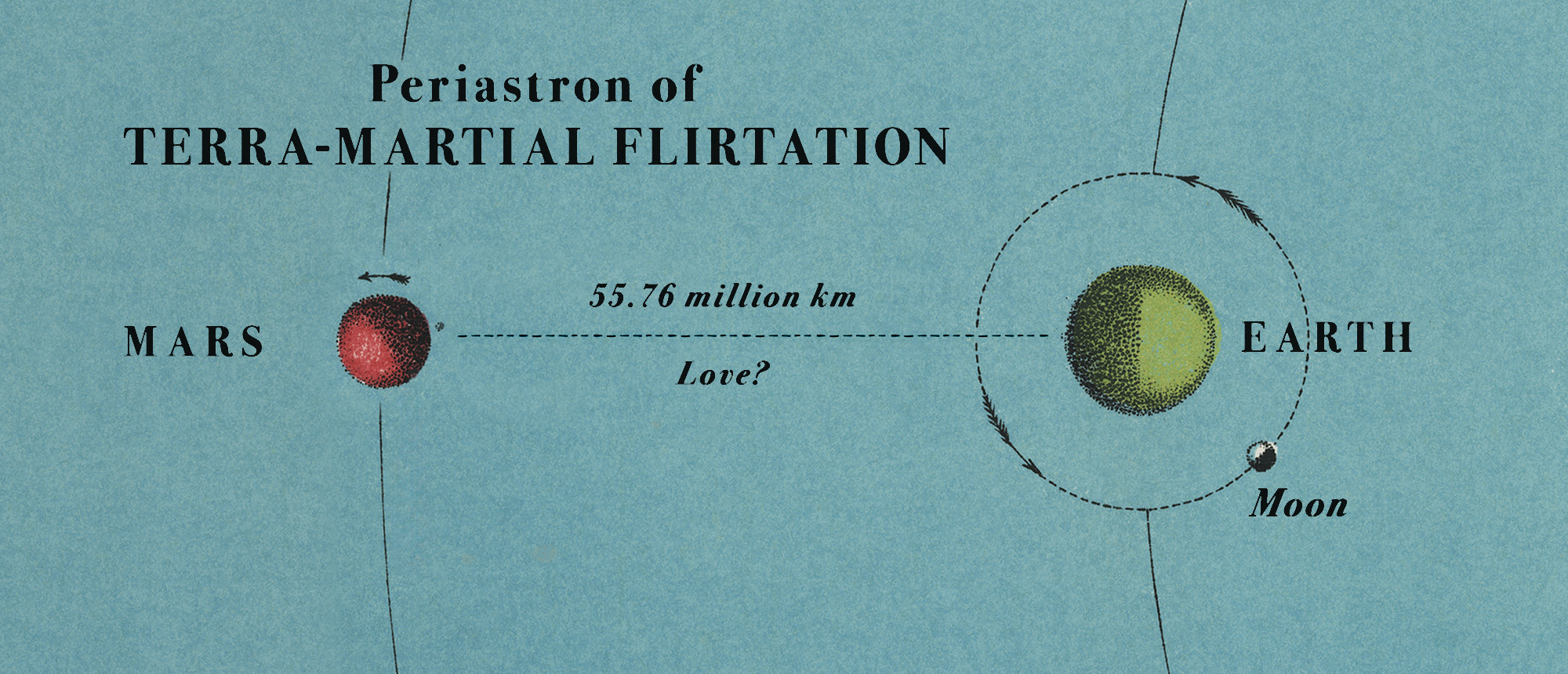
Volitional Obliquity and the Thermopsychological Model of Emotion: The Greenland Boreholes
Research carried out by a multidisciplinary team in Greenland shows that the Earth’s mood has been shifting wildly since well before the Holocene. Deep-glacial ice samples drilled in Greenland’s Nioghalvfjerdsfjorden Ice Monitoring Station have demonstrated unusual properties. These cylindrical records of terrestrial history were subjected to deep concentration resonance scans, pH flavor modeling, and prolonged direct eye contact.
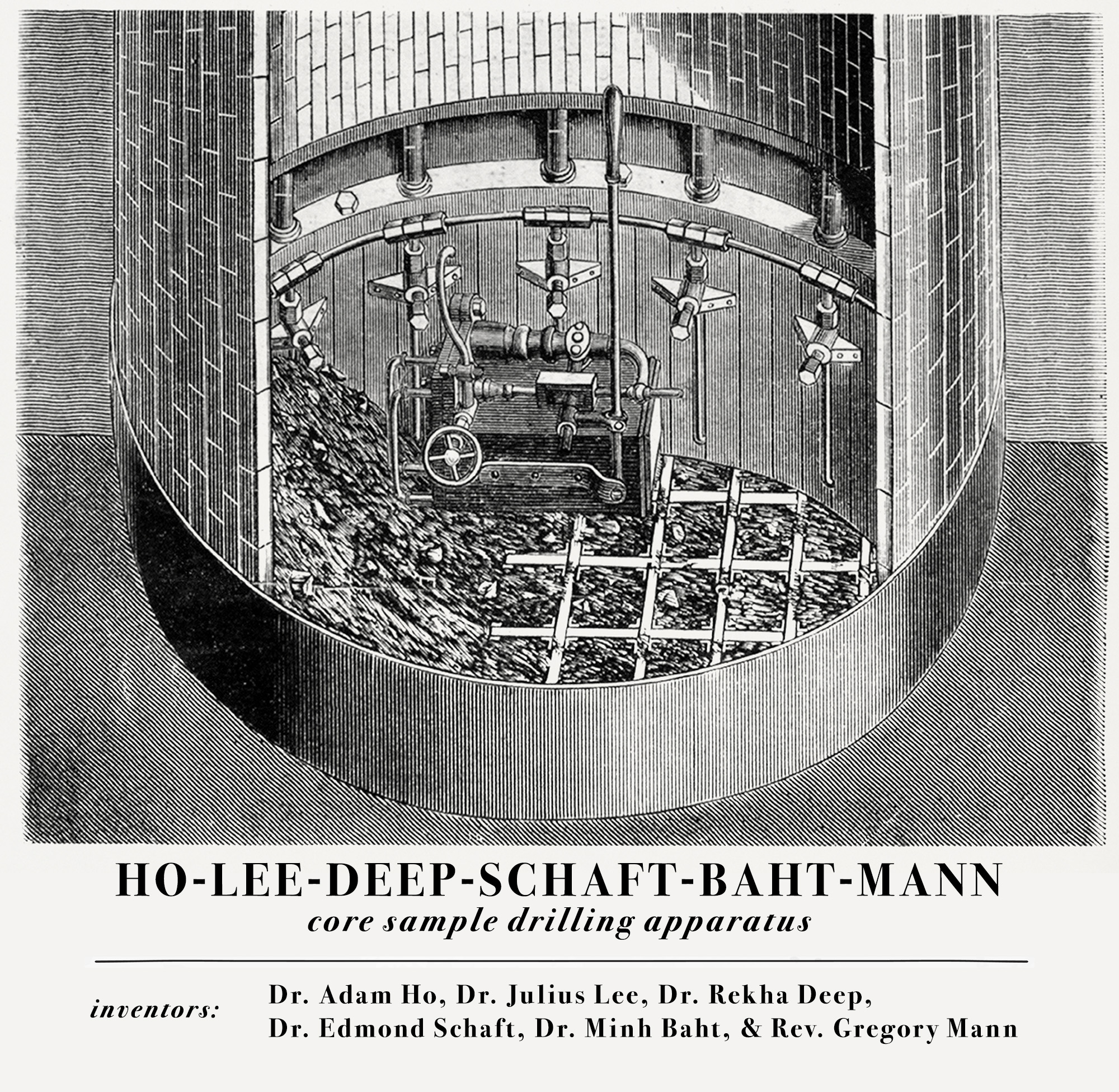
Research Assistant Cambria DeSlivovitch observed:
The first time I touched the core, I felt regret. And an overwhelming sadness. I was awash in misery on a planetary scale. But then, as though someone sensed my anguish, I experienced a sharp sense of irony, almost like someone told a joke that I didn’t hear but nevertheless reacted to. I was immediately cheered, to the point of deliriousness.
After that I strongly felt, in quick succession, ennui, chrysalism, sonder, enouement, kenopsia, nodus tollens, schadenfreude, mauerbauertraurigkeit, and finally anagnorisis. It was an eventful sixteen minutes.
Similar anecdotal reports included sensations of wistfulness, forgetting what you walked into a room for, mild purposefulness, and a vivid sense of “Mid-March.” The results are being peer-reviewed by the Department of Emotional Lithography.
The Psychoheliotropic Feedback Drive
Further evidence reveals that axial tilt may indeed fluctuate in response to affective feedback loops between this newly-suggested planetary consciousness and humanity’s cultural output. As cited in the Institute’s study:
- Bryan Adams’s “Summer of ’69”
- Vernon Duke’s “Autumn in New York”
- Vivaldi’s The Four Seasons, Concerto No. 4 in F Minor “Winter”
- Mel Brooks’s “Springtime for Hitler”
These data suggest that human-constructed denotations and connotations of the seasons through artistic depiction are intrinsically related to, caused by, and reflected in the Earth’s own axial parallelism. Furthermore, these collective reactions to the planet’s seasonal progression may in fact feed further into the planet’s own moods, which could in turn cause greater variance in the axial tilt.
“It stands to reason,” Dr. Prof. Wittlewasher stood to reason, “that our artworks, as briefly as they’ve existed relative to the Earth’s age, are being absorbed and perhaps even anticipated by the planet in return.” The Institute’s most vocal critics have criticized this hypothesis, likening the personification of a fairly mundane aspect of Earth’s gravitational arrangement to a belief in astrology. Dr. Prof. Wittlewasher fired back through his social media channels: “Astrology is just two letters and a single corroborating study away from being real science.”
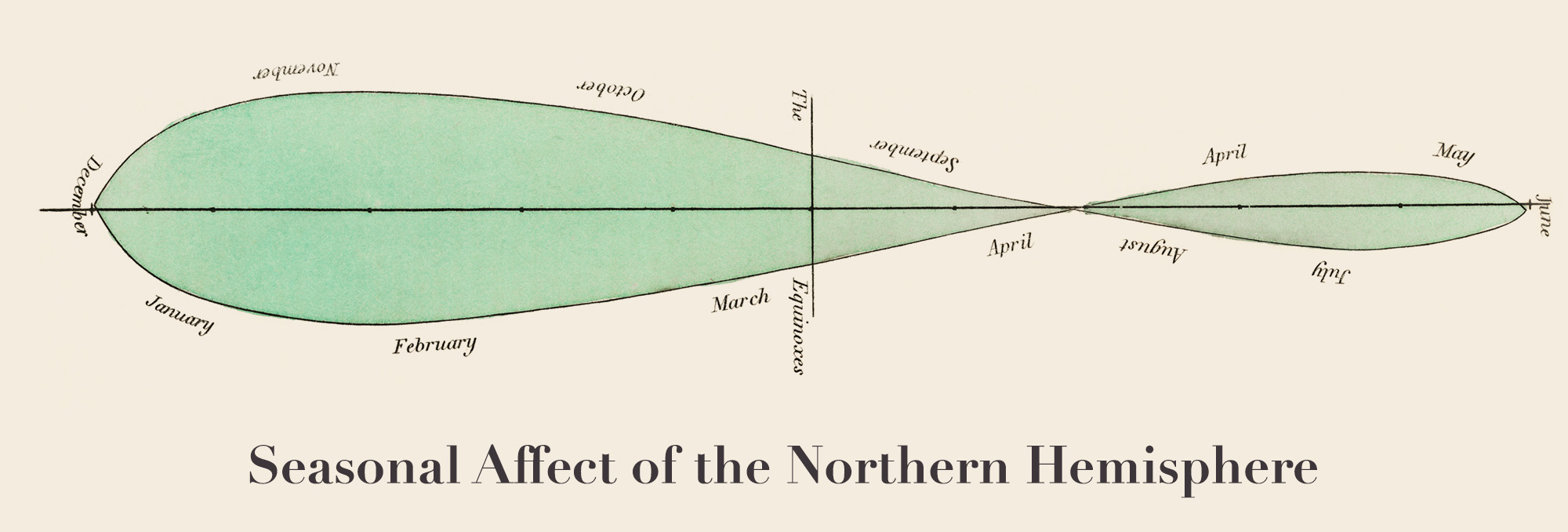
Toward a Behavioral Interpretation of Axial Precession
In a joint effort with the Department of Accolades, researchers have been whispering mild compliments into the Greenlandic boreholes. e.g. “Your cloud patterns are very tasteful today.” And “People have been saying your jet streams have been very consistent. I’d have to agree.” And, introducing the variable of wordplay, “Your magnetic field is attractive.”
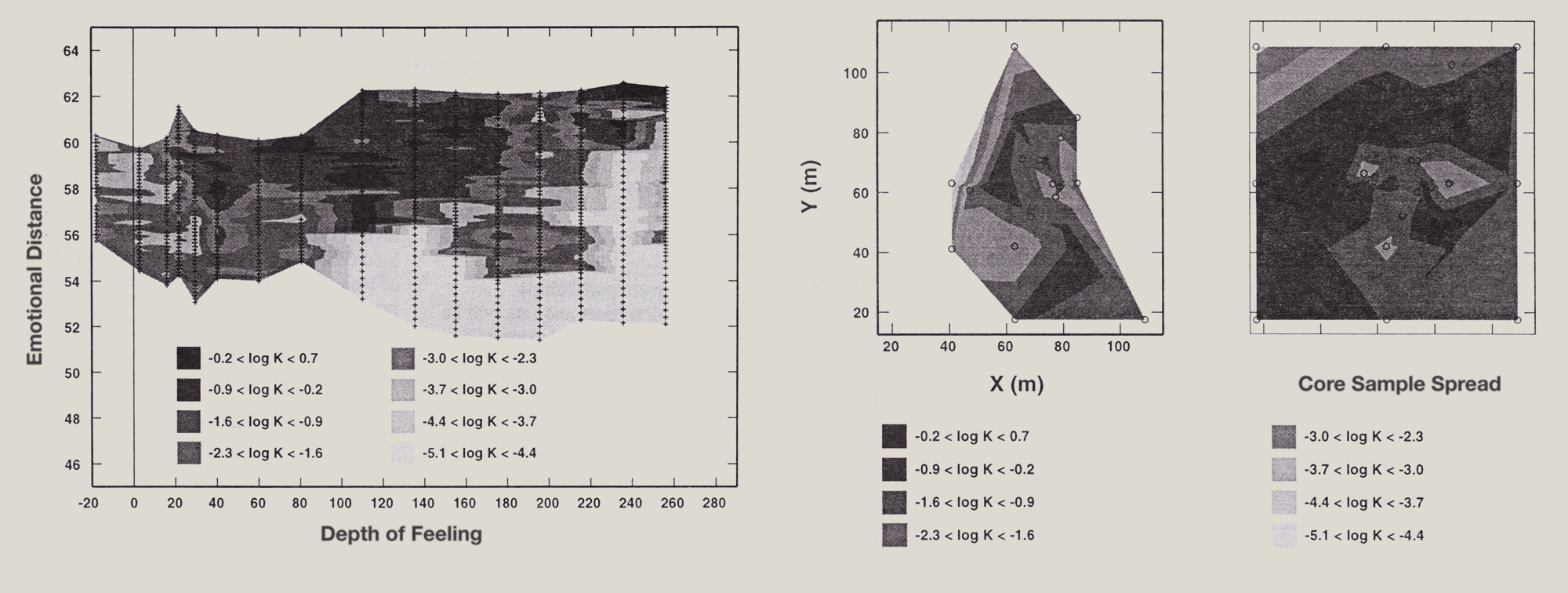
While plate movement remains stable, test sites showed measurable shifts in the magnetic poles, which correlated with positive language. Wary of altering the planet’s mood too much, these shifts are dubbed Trepidations.
The long-assumed objectivity of planetary movements has been challenged. Future implications may include mood-calibrated calendars and even diplomatic or therapeutic overtures to the planet itself.
We may not need to endure another harsh winter, but rather to negotiate it. Anticipate the weather and natural disasters by calibrating our collective emotional intelligence to the Earth itself. If we can truly learn to listen, we may yet be able to, among other things, finally stabilize February.
Research is preliminary, ongoing, and promising.
UPDATE: Qualia of Seasonal Affect
Particulate Books, the imprint of the Institute that specializes in pop-science titles, is delighted to announce it will be publishing Dr. Prof. Coleman P. Wittlewasher’s landmark treatise on his cosmic-seasonal-affective studies later this year: De Concordia Affectuum Temporum Anni (On the Harmony of the Seasons’ Affects).
Below is an excerpt from chapter 7, which contains the classification, categorization, and codification of what Wittlewasher feels the planet’s feeling:
Spring Equinox: Completely Pure. Its character is innocence, simplicity, naïvety, children’s talk.
Late April: Declarations of love and at the same time the lament of unhappy love. All languishing, longing, sighing of the love-sick soul lies in this season.
Very late April: A leering time of year, degenerating into grief and rapture. It cannot laugh, but it can smile; it cannot howl, but it can at least grimace its crying.
May-ish: Penitential lamentation, the friend and help-meet of life; sighs of disappointed friendship and love lie sometime around here. Prevailing westerlies reveal secrets kept.
First week of June: The weather of triumph, of Hallejuahs, of war-cries, of victory-rejoicing.
Summer Solstice: Melancholy belief in frivolous things, the spleen and humours brood. Monsoons upset newborns, cyclonic weather systems disturb the planful.
July: Cheerful love, clear conscience, hope aspiration for a better world.
August through Mid-September: The season of love, of devotion, of intimate conversation with friends and enemies. Coastal erosion is at a minimum.
Autumnal Equinox: Feelings of the anxiety of the soul’s deepest distress, of brooding despair, of blackest depression, of the most gloomy condition of the soul. Every fear, every hesitation of the shuddering heart, breathes out the feeling of realizing it’s almost September 30th. If ghosts could speak, their speech would approximate the feeling of the year slipping through your fingers.
False autumn: Naïve, innocent declaration of love, lament without grumbling; sighs accompanied by few tears; the brief dip in temperatures and barometric pressure that belies another spike of summer heat speaks of the imminent hope of resolving in the pure happiness of cooler weather and calmer seas.
October 22: Noisy shouts of joy, laughing pleasure and not yet complete, full delight lies in the third week of October. Jeff Goldblum’s birthday.
First week of November: Complaisance and calm. Moderate icing.
Last three weeks of November: Deep depression, funereal lament, groans of misery and longing for the grave. Hurricanes.
First half of December: Triumph over difficulty, free sigh of relief uttered when hurdles are surmounted. Echoes of a soul which has fiercely struggled and finally conquered all obstacles reverberates through the low-pressure systems above the poles. Good, becoming poor in showers.
Winter Solstice: A gloomy time of year: it tugs at passion as a dog biting a dress. Resentment and discontent are its language.
December 24: Everything rustic, idyllic and lyrical, every calm and satisfied passion, every tender gratitude for true friendship and faithful love. In a word, every gentle and peaceful emotion of the heart is correctly expressed on this day.
December 25: Discontent, uneasiness, worry about a failed scheme; bad-tempered gnashing of teeth; in a word: resentment and dislike.
Ten days surrounding January 1: The grave is near. Death, putrefaction, judgment, eternity lie in the final and first days of the year.
Late January: This is as it were the time of patience, of calm awaiting one’s fate, and of submission to the inevitable.
February: This time of year includes declarations of innocent love, satisfaction with one’s state of affairs; hope of seeing one’s beloved again when parting; youthful cheerfulness, and hail.
February 29: A quaint creature, often dressed in the garment of night. It is somewhat surly and very seldom takes on a pleasant countenance. Mocking God and the world; discontented with itself and with everything; the feeling of preparation for unpleasant work. Loose icebergs disrupt travel.
Early March: Strongly felt, announcing wild variances. Tornadoes, drought, sea ice, polar vortexes. Anger, rage, jealousy, fury, earthquakes, despair, flash floods, and every burden of the heart lies at the start of springtime. The jet stream changes direction.
Mid-March: Ambivalence. Rain.
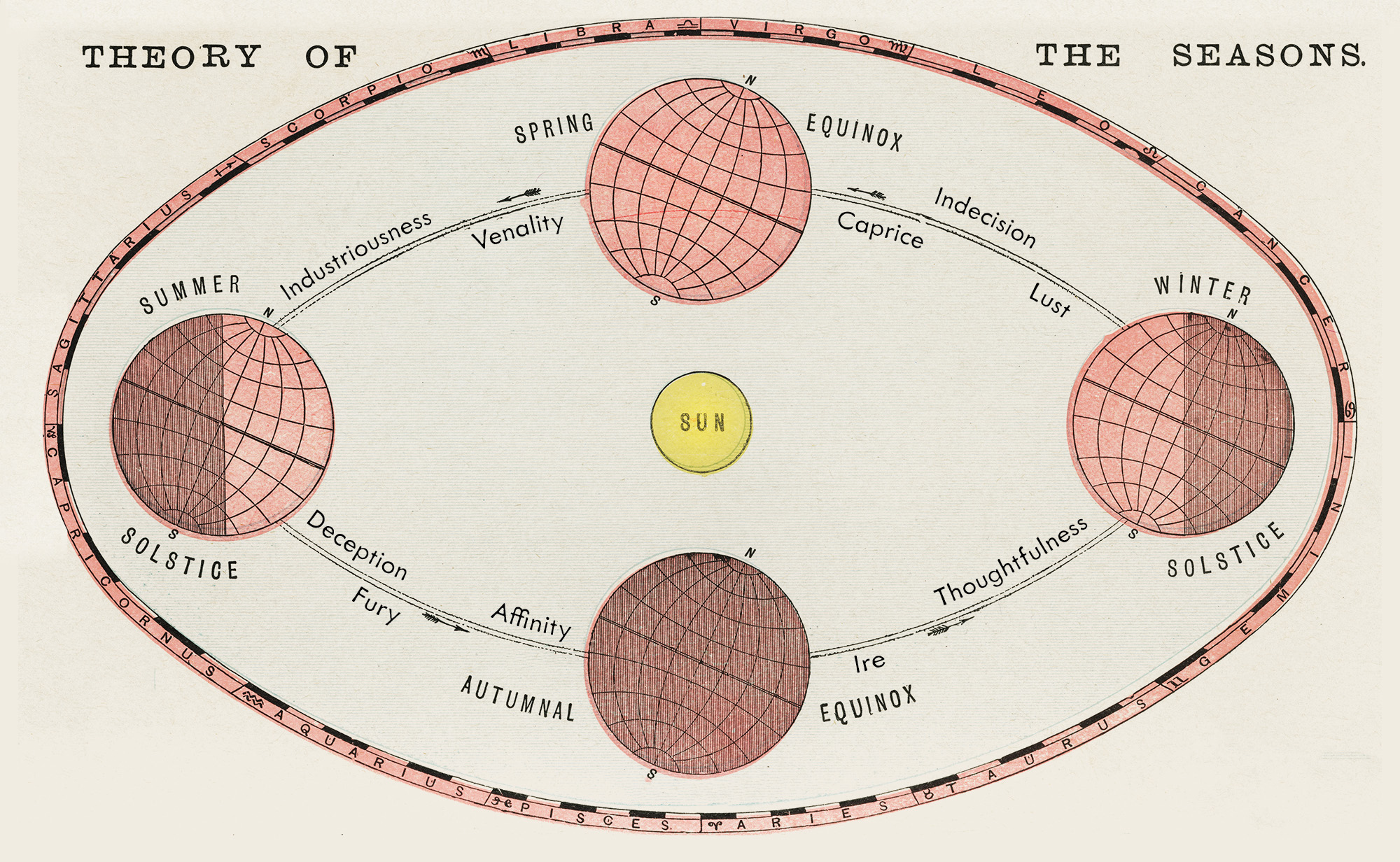
Marcus Thornwood, Director of Communications for the Institute
Reproduced with permission from the 2024 3rd quarter issue of the Journal of Theoretical Astroscience (Condé Nast) and episode 5 of Cosmically Speaking (Wittlewasher et al.)
